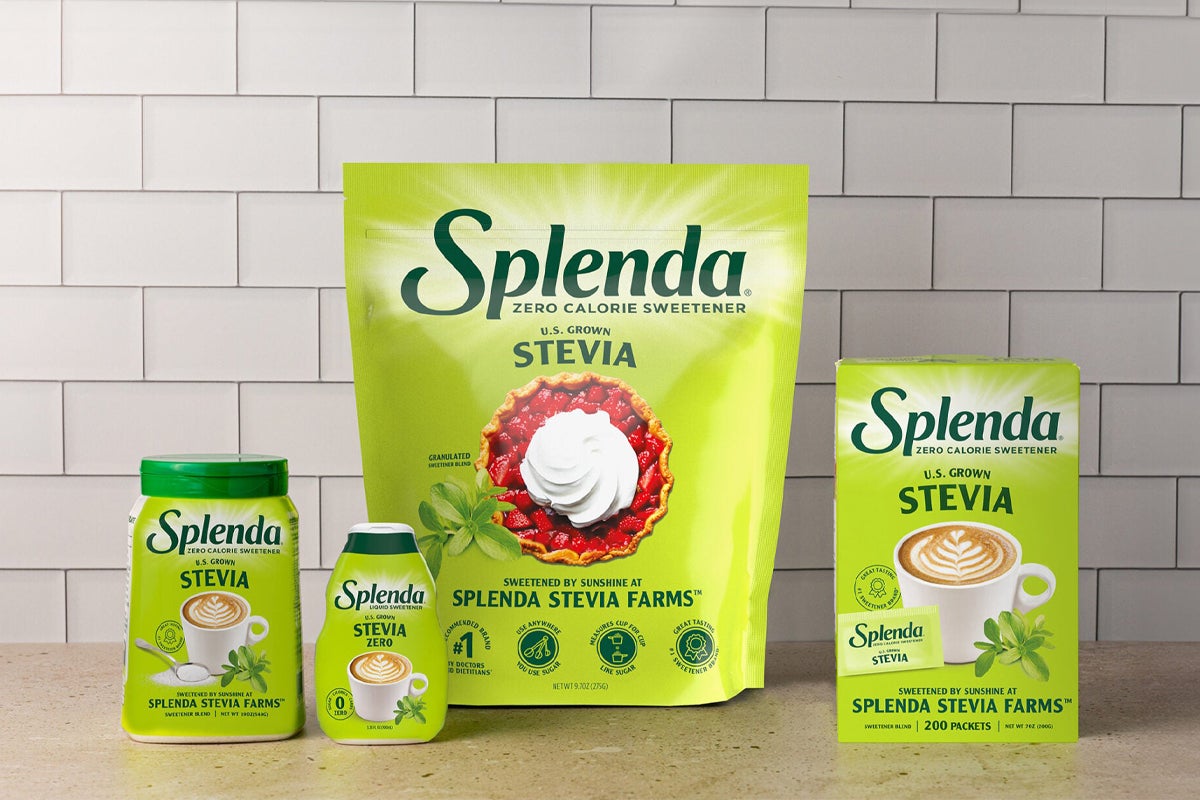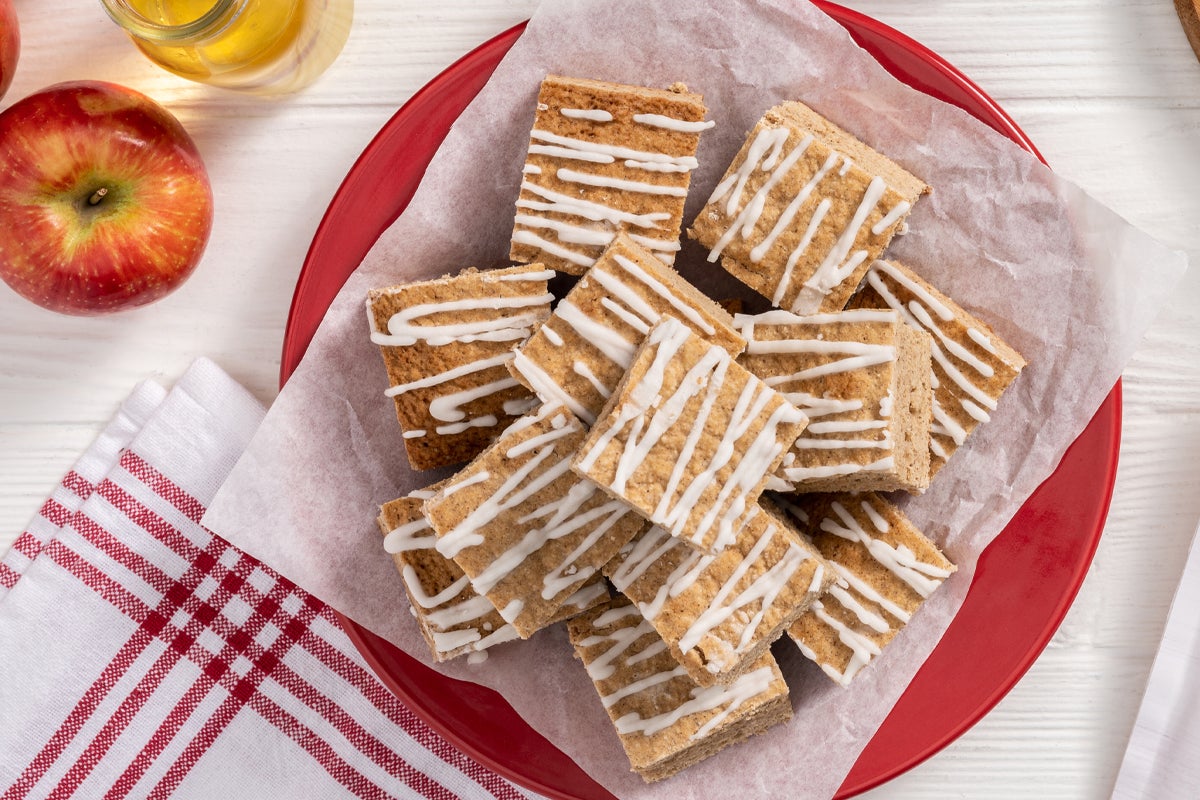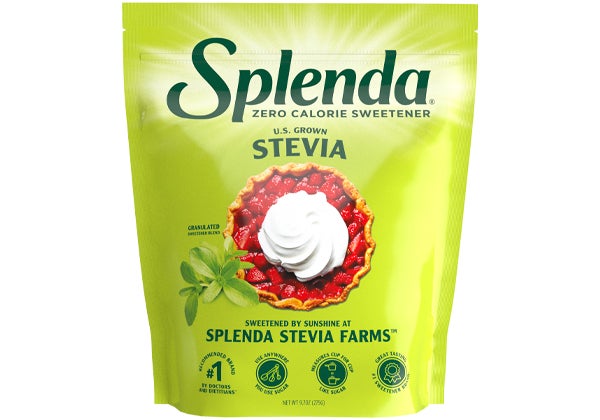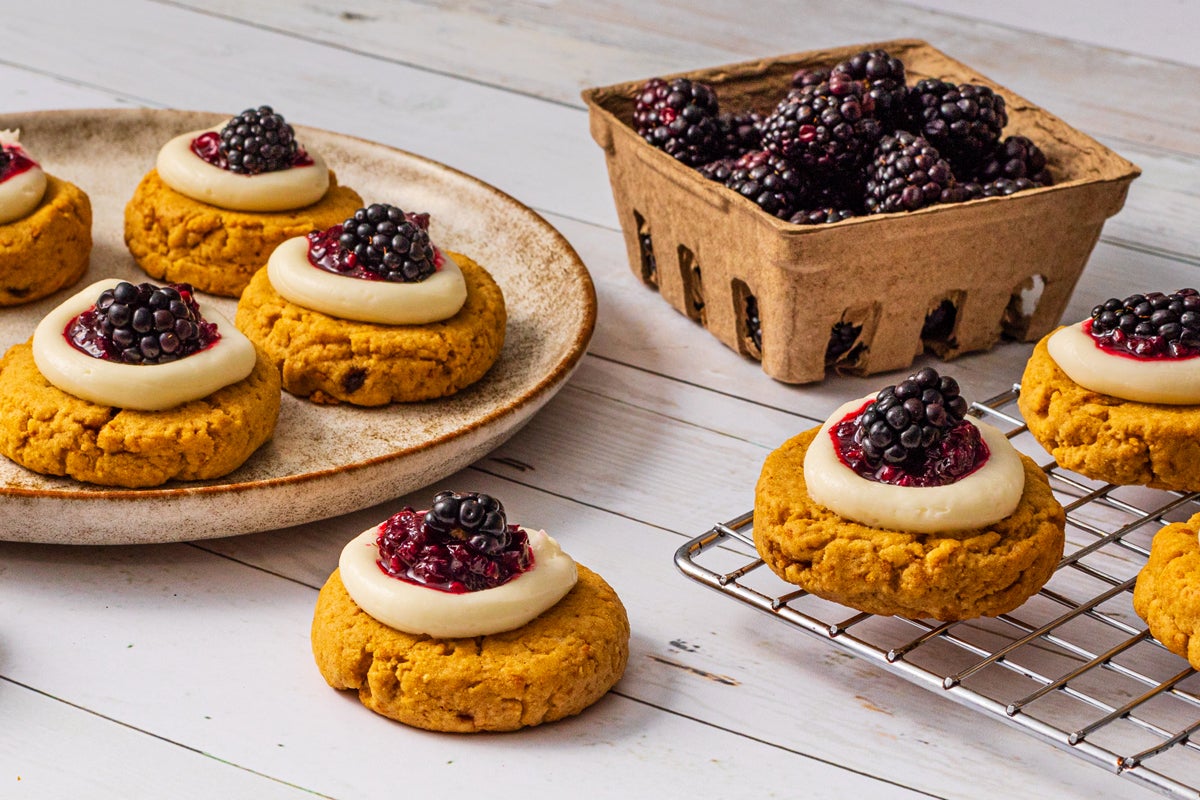Who Knew Sugar-Free Could Taste So Sweet?
A How-To Guide for Baking With Sugar Substitutes
May 10, 2021
Whether you’re wanting to make lower-calorie recipes to support weight loss, following a low-carb keto diet, or need to consume less sugar to help manage your blood sugar levels, you may be wondering which sugar substitutes are best for your baking needs.
Traditional table sugar plays several important roles in baking. Besides adding flavor and sweetness, sugar turns baked goods golden brown, adds volume to help cakes and breads rise, and holds moisture so you end up with a moist and tender crumb.
Unfortunately, the amount of sugar used in baked goods adds empty calories. Added sugar can spike blood sugar levels and is linked to obesity, diabetes, and heart disease. That’s why the Dietary Guidelines for Americans recommends everyone limit their intake of added sugar.1 Additionally, due to the concerns over added sugar intake the Nutrition Facts label was recently modified to call out how much added sugar is in a specific food.
Good news! There are plenty of sugar-free sweetener options that can turn out delicious treats that can deliver similar results to what you’d get with regular sugar and without all of the extra calories and carbs. In fact, Splenda offers several low and zero calorie sugar substitutes that bake and taste like sugar including Splenda Original Sweeteners, Splenda Stevia Sweeteners, Splenda Monk Fruit Sweeteners, and Splenda Allulose.
What’s A Sugar Substitute?
Sugar substitutes can be classified into two main types: artificial and plant based.
Artificial sweeteners are made to have the sweetness of sugar without any calories. These are good options for sweetening beverages like coffee or tea but only some can be used for baking like Splenda Original Sweetener.
Plant based sweeteners can be found in nature. They include maple syrup, honey, agave, brown rice syrup, and coconut sugar. While these sweeteners may seem like healthier options and are often used by health-conscious bakers, they contain just as many grams of sugar and calories as traditional sugar and behave basically the same as sugar in the body.
However stevia, monk fruit extract, and allulose are also sugar substitutes, but they’re low enough in calories to be basically negligible. They don’t impact blood sugars the same as other plant based sweeteners and are ideal for baking and sweetening beverages like coffee and tea. These are perfect for individuals with diabetes or anyone following a low-carb or keto diet who still wants to enjoy dessert and other sweets.
Here are some tips to help you bake healthier, sugar-free recipes with these sugar alternatives.
Baking with Stevia

Stevia, made from the stevia plant, contains zero calories so it’s a good sugar substitute. It can be found in powdered or liquid form.
The exact flavor of stevia depends on the type of extract. Splenda Stevia Sweetener is made with U.S. grown stevia with plant-based ingredients. Our sweetest stevia plants are grown to be great tasting so you can replace added sugar in all of your favorite foods and drinks.
The taste of stevia is also slightly different from sugar, so it’s great to use in recipes that contain fruit, which provides flavor and acts as a sweetener. Try replacing sugar with Splenda Stevia Sweetener in fruity pie fillings, banana bread, and fruit crisps.
Stevia is good for baking moist and delicious cookies and cakes. Just note that it won’t quite brown the same way sugar does. For baked goods like cookies and muffins where browning and caramelization are desired, you may want to try allulose as it browns and caramelizes like sugar.
Stevia dissolves in liquid, so you can add it to your wet ingredients just like you would sugar.
It retains its sweetness when exposed to heat, whether in baking a pie in the oven, microwaving a custard, or preparing a jam filling on the stovetop.
The most important thing to remember about baking with stevia is that it is not always an equal 1-to-1 replacement for sugar. The recommended conversion for stevia depends on which stevia product you’re using.
Splenda Stevia Sweetener Jar is a blend of stevia extract and the also sweet-tasting sugar alcohol erythritol. The recommended conversion for this product is ½ to 1. That means use it in half the amount that a recipe calls for sugar. If a recipe calls for 1 cup of sugar, use a ½ cup of Splenda Stevia Sweetener Jar.
Splenda Stevia Granulated Sweetener is a blend of stevia extract and tapioca maltodextrin. This sweetener bakes and measures cup-for-cup like sugar. This product can be swapped in equal amounts for sugar.
Looking for delicious recipes with our Splenda Stevia? Try these Salted Double Chocolate Cookies or this Keto Chocolate Mug Cake.
Baking with Monk Fruit

Monk fruit extract is another plant-based sweetener. It comes from the Luo Han Guo plant, which is native to Asia and produces melon fruit.
Monk fruit extract contains zero calories or net carbohydrates so it’s also a great keto sweetener and won’t spike blood sugar.
On its own, monk fruit extract is sweeter than white sugar, but lacks the volume and texture of traditional sugar. However, when it’s combined with other ingredients, like erythritol in Splenda Monk Fruit Sweetener, it can be used just like sugar in a 1 to 1 replacement ratio. This makes it a great choice for a plant-based sugar substitute for baked goods.
Erythritol is a sugar alcohol that the body doesn’t fully digest so it provides very few calories. It’s a little less sweet than traditional sugar and helps balance the sweetness of the monk fruit to create an ideal sugar replacement.
Both monk fruit extract and erythritol retain their sweetness when cooked at high temperatures so this blend can be used in cookies, cakes, and bread recipes. This sweetener also works well in puddings, custards, gelatins, and frozen desserts.
The most important thing to know about baking with monk fruit extract is that it needs to be completely dissolved for the best results. Dissolving the sweetener helps reduce the brief mouth “cooling effect” caused by erythritol.
Simply dissolve Splenda Monk Fruit Sweetener in whatever liquids or fats are in a recipe before adding the dry ingredients. Warming the liquid in a recipe can help dissolve the sweetener.
Looking for a delicious recipe with Splenda Monk Fruit Sweetener? Try this Carrot Cake or these Keto Sugar Cookies.
Baking with Allulose

Unlike stevia and monk fruit, allulose isn’t an extract but a naturally occurring sugar found in certain plant foods, like figs, raisins, wheat, jackfruit, and maple syrup. It’s sometimes referred to as a “rare sugar” because it’s found in these foods in very small amounts.
The composition of allulose is very similar to that of traditional sugar, but is formed in such a way that our bodies can not digest it. According to the FDA, allulose provides 0.4 calories per gram compared to sugar’s 4 calories per gram.2
The flavor of allulose is very much like white sugar, but a little less sweet. It doesn’t have any bitterness, aftertaste, or “cooling effect” like other sweeteners. It also has many of the same baking qualities as regular sugar.
The best qualities of Splenda Allulose Sweetener is that it can be swapped for sugar in an equal 1-to-1 ratio and it is the only keto-friendly sugar substitute that browns.
Allulose will caramelize and brown faster than white sugar when exposed to heat so some recipes may need to be slightly modified.
Some tips to help you prevent over-browning are to lower your oven temperature by 25 degrees, decrease the bake time by a few minutes, and tent your recipe with aluminum foil. Keeping a close watch on your baked goods made with allulose will help you prevent too much browning.
Allulose locks in moisture, making it ideal for baking chewy cookies, cakes, muffins, and quick breads with a soft and tender crumb. Try replacing heavier fats, like butter and coconut oil, with yogurt or milk to produce lighter and fluffier cakes and muffins.
Allulose dissolves into liquids and will become sticky when heated, so it’s a great choice for caramel, sticky candies, chocolate sauce, lemon curd, and jam fillings.
Looking for recipes with Splenda Allulose Sweetener? Check out this Very Vanilla Cake or this Gluten-Free Chocolate Chip Banana Bread.
Takeaway
Baking with sugar substitutes can take some practice, but with the right ingredients and know-how, you can enjoy some amazingly delicious keto and diabetic-friendly baked goods.
If you’re just starting to replace sugar in baked goods with sugar substitutes, try using these Splenda recipes that have been designed to be made with your preferred sweetener so you can get used to how each behaves in different types of recipes.
Before you know it, you’ll be swapping sugar for these sugar substitutes in all your favorite recipes.
Explore all the sweet options! See our full line of Splenda products.
Written by Sharon Lehman, RDN, Recipe Developer, and Writer.
Try our Splenda Sweeteners

Splenda® Stevia Sweeteners

Splenda® Monk Fruit Sweeteners

Splenda® Allulose Sweeteners
1 Dietary Guidelines for Americans. Cut Down On Sugar. Accessed February 23, 2021.https://health.gov/sites/default/files/2019-10/DGA_Cut-Down-On-Added-Sugars.pdf 2 Center for Food Safety, Nutrition A. FDA Issues Draft Guidance Regarding the Declaration of Allulose. Accessed February 23, 2021. https://www.fda.gov/food/cfsan-constituent-updates/fda-issues-draft-guidance-regarding-declaration-allulose-nutrition-facts-label

